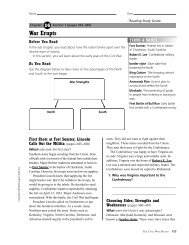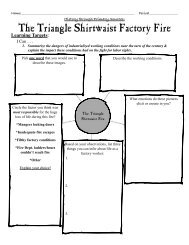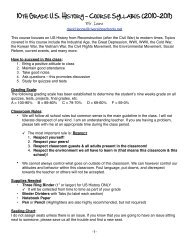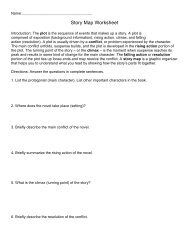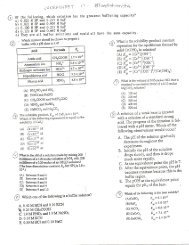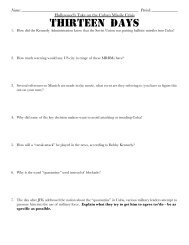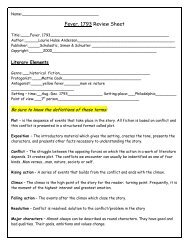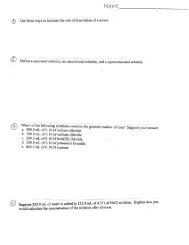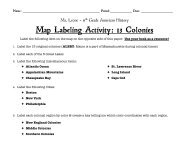Chapter 16 Text
Chapter 16 Text
Chapter 16 Text
Create successful ePaper yourself
Turn your PDF publications into a flip-book with our unique Google optimized e-Paper software.
<strong>16</strong>,9 Acid-Base Properties of Salt Solutions 643<br />
(a) (b) (c)<br />
± Figure <strong>16</strong>.11 Depending on the ions involved, salt solutions can be neutral, acidic, or<br />
basic. These three solutions contain the acid-base indicator bromthymol blue, (a) The NaCI<br />
solution is neutral (pH = 7.0); (b) the NH4CI solution is acidic (pH = 3.5); (c) the NaCIO<br />
solution is basic (pH = 9.5).<br />
SAMPLE EXERCISE <strong>16</strong>.17<br />
Predict whether the salt Na2HPO4 will form an acidic or basic solution on dissolving<br />
in water.<br />
Solution<br />
Analyze and Plan: We are asked to predict whether a solution of Na2HPO4 will be<br />
acidic or basic. Because Na2HPO4 is an ionic compound, we divide it into its component<br />
ions, Na+ arid HPO42~, and consider whether each is acidic or basic. Because Na+<br />
is the cation of a strong base, NaOH, we know that Na+ has no influence on pH. It is<br />
merely a spectator ion in acid^base chemistry. Thus, our analysis of whether the solution<br />
is acidic or basic must focus on the behavior of the HPO42~ ion. We need to consider<br />
the fact that HPO42~ can act as either an acid or a base.<br />
'(an) ^=± H+(oq) + P043~(flfl) , .[<strong>16</strong>.45]<br />
HO H2PO4~(fl



